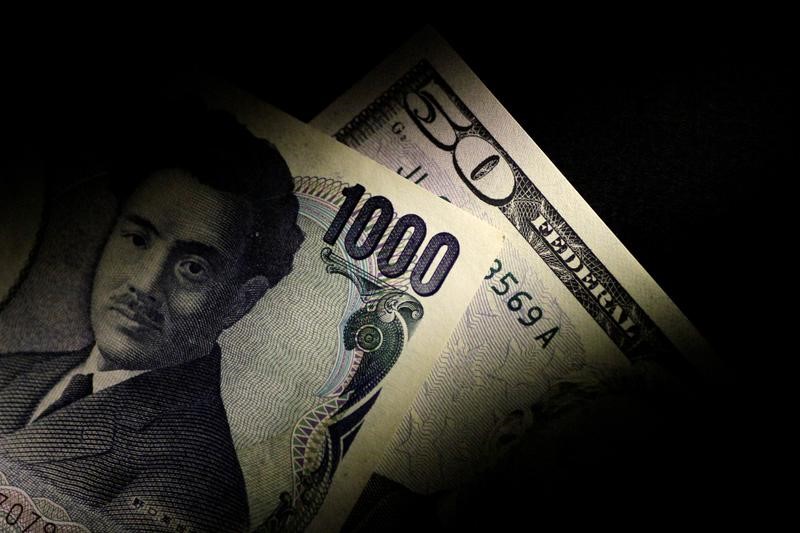Investing.com - The majority of the fast money yen shorts have likely been fully liquidated, according to UBS, which should reduce future volatility.
The unwinding of the yen carry trade has been a significant factor behind a lot of the market volatility of late, as the decision by the Bank of Japan to hike interest rates last week and the expectation of cuts by the Federal Reserve caused many players to reassess long-held positions.
The global carry trade involves investors borrowing money in a place where interest rates are low and using it to invest elsewhere in assets that generate a higher return.
For years this has widely involved the Japanese yen, as the Bank of Japan has held interest rates near zero in an attempt to stimulate a stagnant economy.
A key focus of markets is gauging the size of the global yen carry trade and how much more is at risk of being unwound, analysts at UBS said, in a note dated August 7.
“We categorize the yen carry trade into three buckets: the ‘fast money,’ the ‘semi-fast’ money, and the ‘sticky money,’” UBS said. “We believe the fast money yen shorts have likely been fully liquidated. The unwinding of the latter two groups should be gradual and not disorderly, in our view.”
“Our USD/JPY forecasts currently stand at ¥147, ¥147, ¥143, and ¥140 for Sep 2024, Dec 2024, Mar 2025, and Jun 2025, respectively,” UBS said.
“With the latest rebound in the USD/JPY, investors should look to sell the currency pair on rallies above ¥147, given our directional guidance for it to decline over the longer term.”
At 06:10 ET (10:10 GMT), USD/JPY fell 0.4% to ¥146.10, fell sharply to a seven-month low of ¥141.67 at the start of the week.
